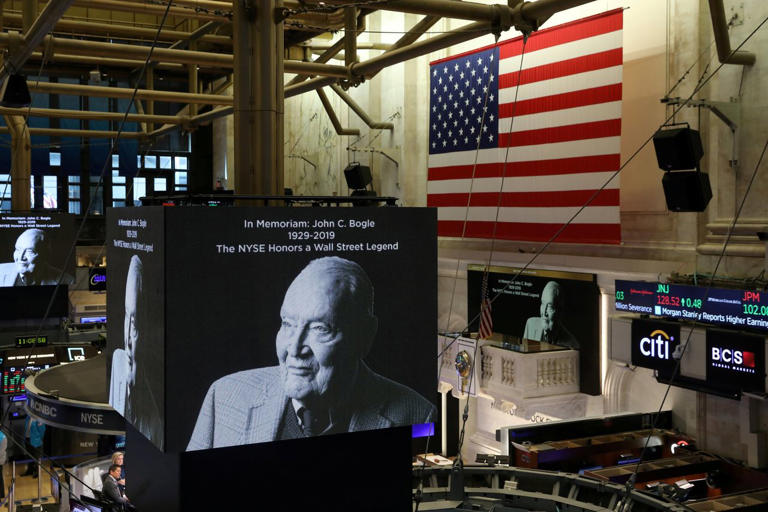The criticism of index funds isn’t new, but it’s gaining renewed attention from respected figures in finance like hedge fund manager David Einhorn. While Einhorn didn’t comment directly, some suggest his recent struggles may influence his perspective, as it’s financially beneficial for him to attribute poor performance to external factors.
Passive investments, such as index funds, have become incredibly popular due to their low cost and simplicity, attracting vast sums of money. Changes in Labor Department rules have accelerated the growth of passively invested target-date funds, particularly in 401(k) plans, over the past 16 years. These funds, which are just one part of the passive-investing universe, now surpass the combined size of all hedge funds.
Vanguard Group, a market leader in passive investing, manages over $1.3 trillion in target retirement funds, with a significant portion coming from automatic enrollment in 401(k) plans. This widespread adoption of passive investment strategies reflects their appeal to consumers and their dominant position in the investment landscape.
Younger employees often have the majority of their retirement savings invested in target-date funds, particularly those targeting retirement dates in the 2060s. These funds typically maintain a high allocation to stocks, often exceeding 90% of assets. The gradual transition to less volatile bonds over time, known as the glide path, combined with automatic rebalancing, is viewed as a prudent strategy to mitigate market volatility and optimize returns.
However, critics raise concerns about the passive nature of target-date funds, highlighting that investors tend not to make changes to their allocations, even during significant market events. For instance, during the pandemic-induced market turmoil, when stocks became relatively cheaper and bond yields declined to unattractive levels, few retirement savers adjusted their portfolios at firms like Vanguard or Fidelity. Similarly, despite current market conditions favoring bonds and some tech stocks showing signs of overvaluation, investors remain largely inactive.
Due to their size and bureaucratic structures, adjustments to the allocations of target-date funds occur slowly. At Vanguard, for example, the asset mix undergoes deliberation by multiple committees. Roger Aliaga-Diaz, Vanguard’s global head of portfolio construction, notes that although internal models suggest stocks are currently overvalued by around 30%, a metric called dispersion indicates that individual stock valuations are not more extreme than historical norms.
While a lack of reaction to market fluctuations can be beneficial for investors, it may hinder the ability to capitalize on opportunities. Frequent trading in actively managed accounts often leads to suboptimal outcomes over the long term. The premise of passive investing rests on the belief that markets efficiently price assets, allowing index funds to benefit from this collective wisdom. However, critics argue that the sheer volume of money flowing into already overhyped stocks challenges this assumption, as there is insufficient incentive to challenge prevailing market valuations.
David Einhorn’s recent assertion that markets are “fundamentally broken” resonates with concerns about the prevalence of stock buybacks by highly valued companies instead of issuing new shares. While some view this as evidence of a broken market, others see it as a sign of a broader shift towards passive investing and AI-driven trading strategies. However, if critics are correct, investors relying heavily on concentrated portfolios, especially younger individuals, may be disproportionately affected when baby boomers retire and begin selling their assets.
Furthermore, traditional strategies such as using bonds as a shock absorber for market downturns face challenges. “Sequence of return risk,” the danger of experiencing poor returns early in retirement, poses a threat to target-date portfolios relying on bonds for protection. Alternative approaches, such as derivatives, offer potential solutions but may not be feasible on a large scale.
Overall, while there are criticisms of passive investing and concerns about market dynamics, potential alternatives face scalability and practical challenges. Additionally, a significant shift away from passive funds could have unintended consequences, potentially impacting market stability and investor outcomes.
